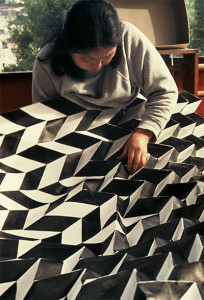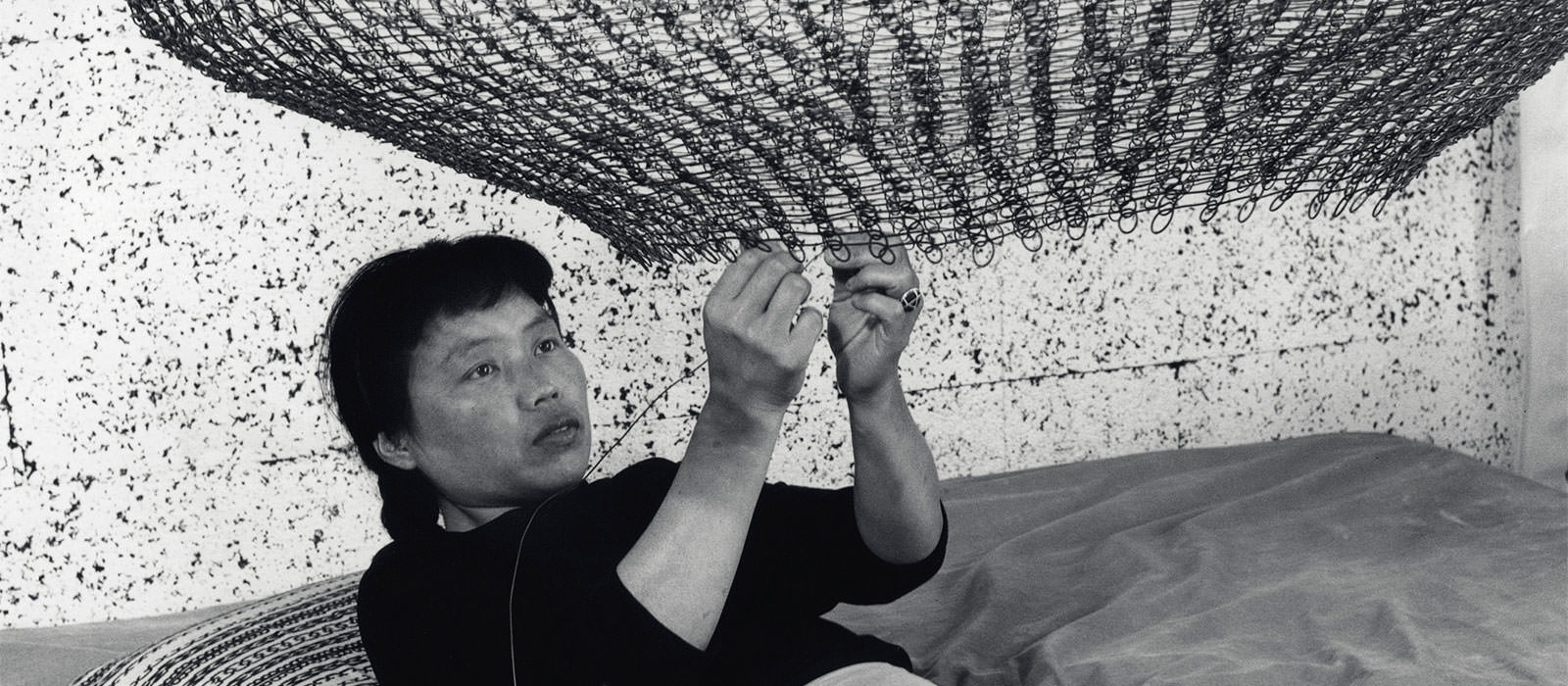“An artist is not special. An artist is an ordinary person who can take ordinary things and make them special.”
Asawa took the best from other people and overlooked their flaws. She worked long hours, attended meetings and performances in the evenings, and often drew late into the night. She was curious about how things were made and enjoyed hearing from others how to make them.
“We always saw her making art, it was part of her everyday existence. I never thought of her making art as a separate activity. To us, she wasn’t working. We didn’t have to be quiet so she could concentrate. Her artmaking space was always in our house…” — Aiko Cuneo, a daughter watching her mother work

Asawa folding inked paper. Photo by Laurence Cuneo
Her collaboration with other artists was one of her chief pleasures. She was a scrounger. She gathered cast-off materials to use as art supplies so that she would have them on hand and could share with others. She kept her studio in her home and made it a community center for her friends and neighbors. She was an outspoken advocate for the arts.
Asawa learned from her internment at age 16 that the ideals of social acceptance and job security were a fantasy. That the only security available to her, and probably everyone else, was to “do what one wanted to do by choice.”

